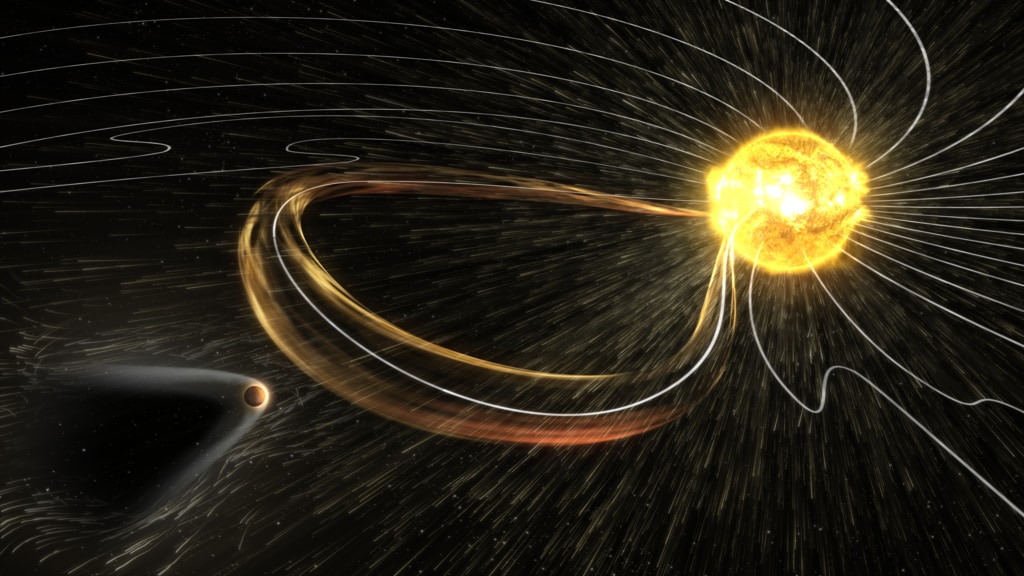Stripping the Martian Atmosphere

A NASA mission reveals how gases in Mars' upper atmosphere are stripped away by the sun's solar wind.
Mars today is a cold, barren desert, but scientists think it was once a warm and wet planet. The change may have been caused by the loss of an early atmosphere driven into space by the sun’s solar wind. Unlike Earth, Mars lacks a global magnetic field that deflects the stream of charged particles continuously blowing off the sun. Instead, the solar wind crashes into the planet’s upper atmosphere, stripping away electrically charged gas atoms, called ions. NASA’s MAVEN spacecraft, which entered orbit around Mars in September 2014, measures the speed and direction of escaping ions to observe the process of how Mars’ atmosphere is eroded by the solar wind. Measurements show the rate of ion loss increases during periods of extreme solar activity, suggesting a younger and more active sun billions of years ago likely played a significant role in transforming the Red Planet. Watch the video for a simulation showing the process of Mars’ atmospheric erosion.
Explore a simulation of how Mars’ upper atmosphere is eroded by the solar wind and see how it compares to MAVEN data in this video.

The solar wind is a stream of particles, mainly protons and electrons, flowing from the sun's atmosphere at a speed of about 1 million mph.

When the wind comes into contact with Mars' upper atmosphere, it can strip away electrically charged gas atoms.

Measurements by NASA's MAVEN spacecraft indicate that Mars' upper atmosphere currently loses roughly a quarter-pound of gas every second.
For More Information
See NASA.gov
Credits
Please give credit for this item to:
NASA's Scientific Visualization Studio and the MAVEN Science Team
-
Animators
- Greg Shirah (NASA/GSFC)
- Horace Mitchell (NASA/GSFC)
- Brian Monroe (USRA)
-
Producer
- Dan Gallagher (USRA)
-
Scientists
- Bruce Jakosky (LASP)
- Xiaohua Fang (LASP)
- Yaxue Dong (LASP)
- Yingjuan Ma (UCLA)
-
Writer
- Dan Gallagher (USRA)
Release date
This page was originally published on Tuesday, November 10, 2015.
This page was last updated on Monday, January 6, 2025 at 1:28 AM EST.

